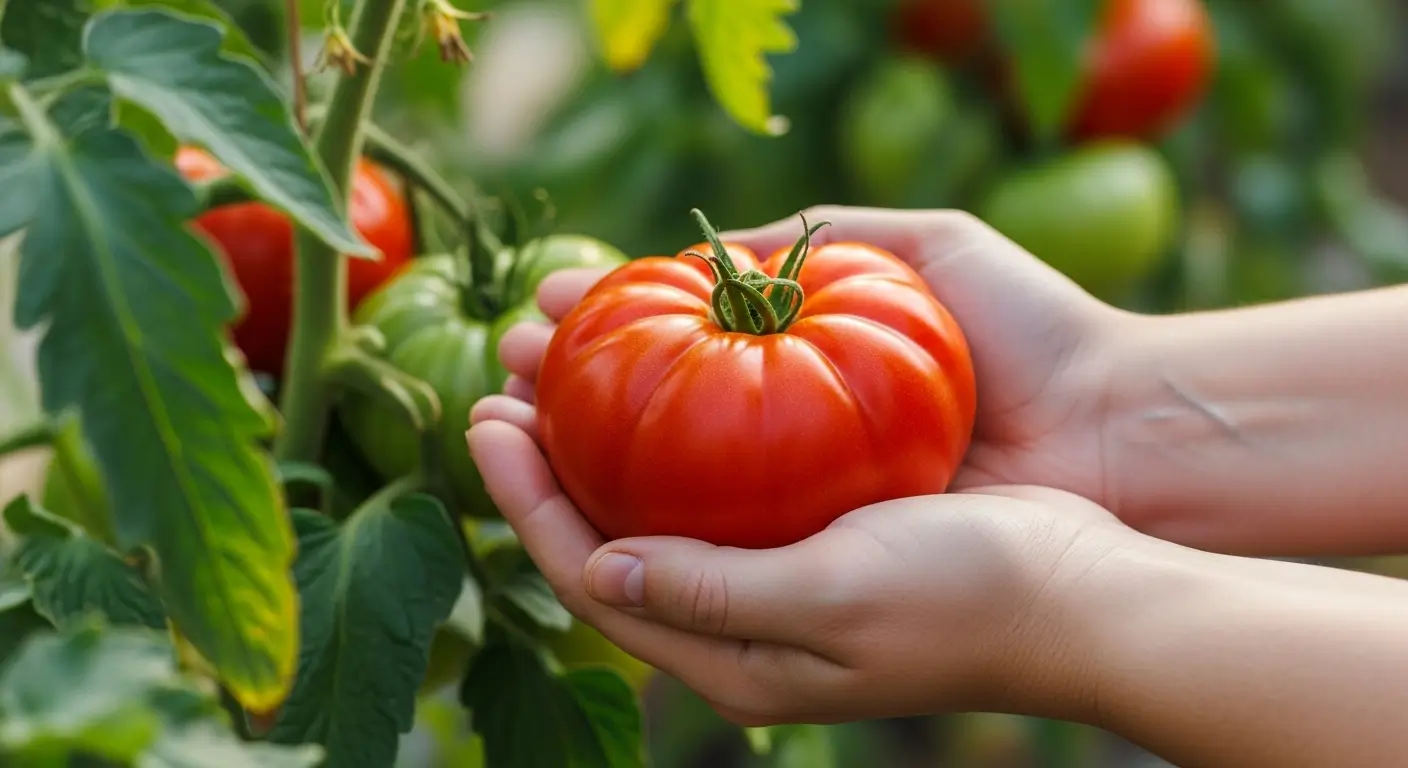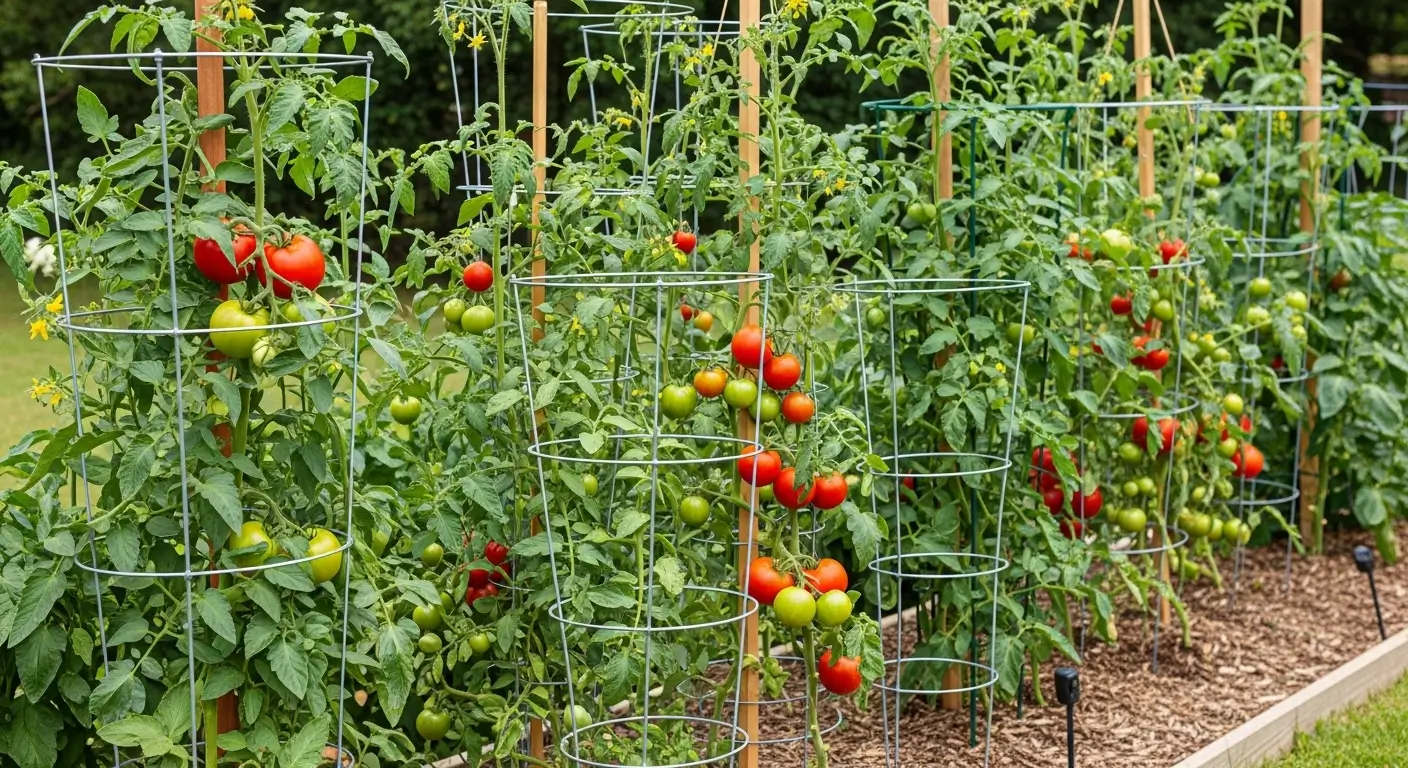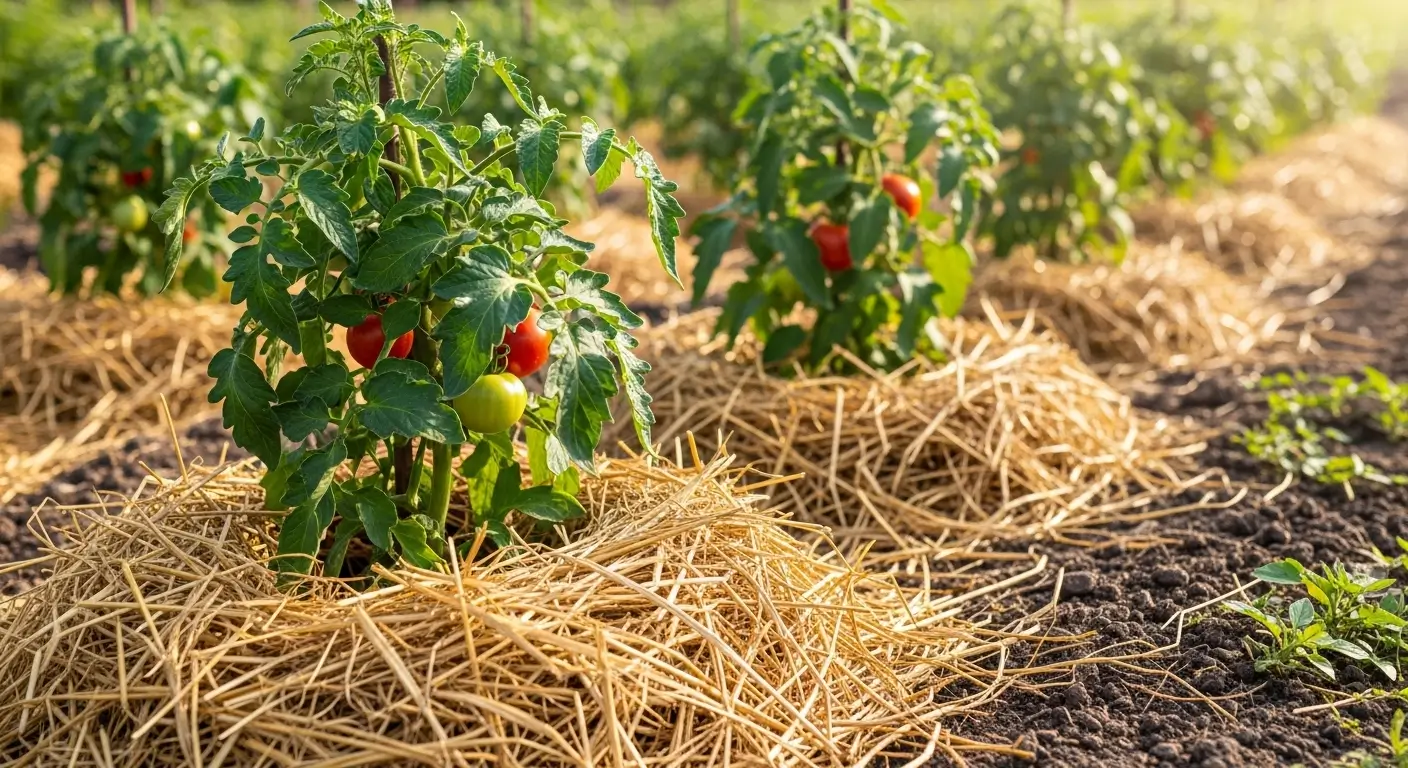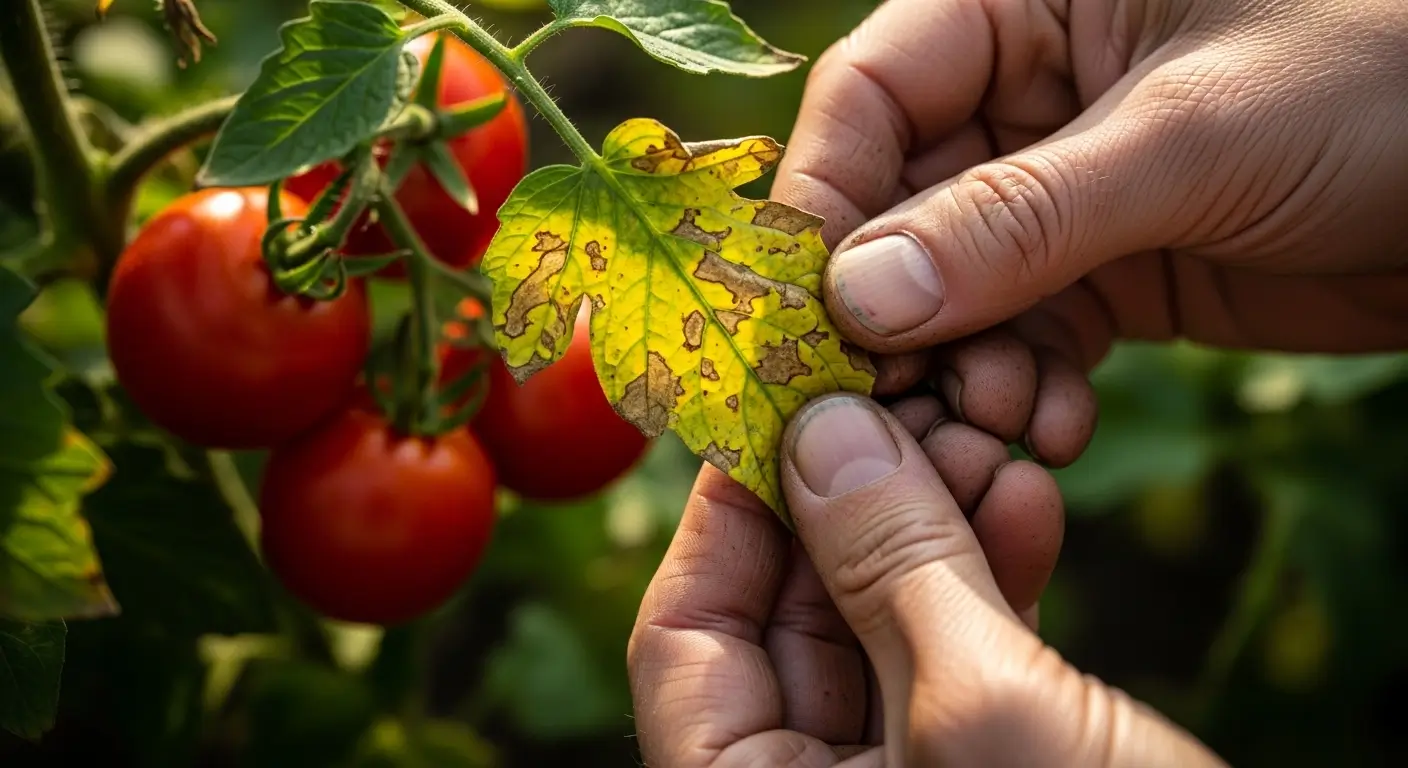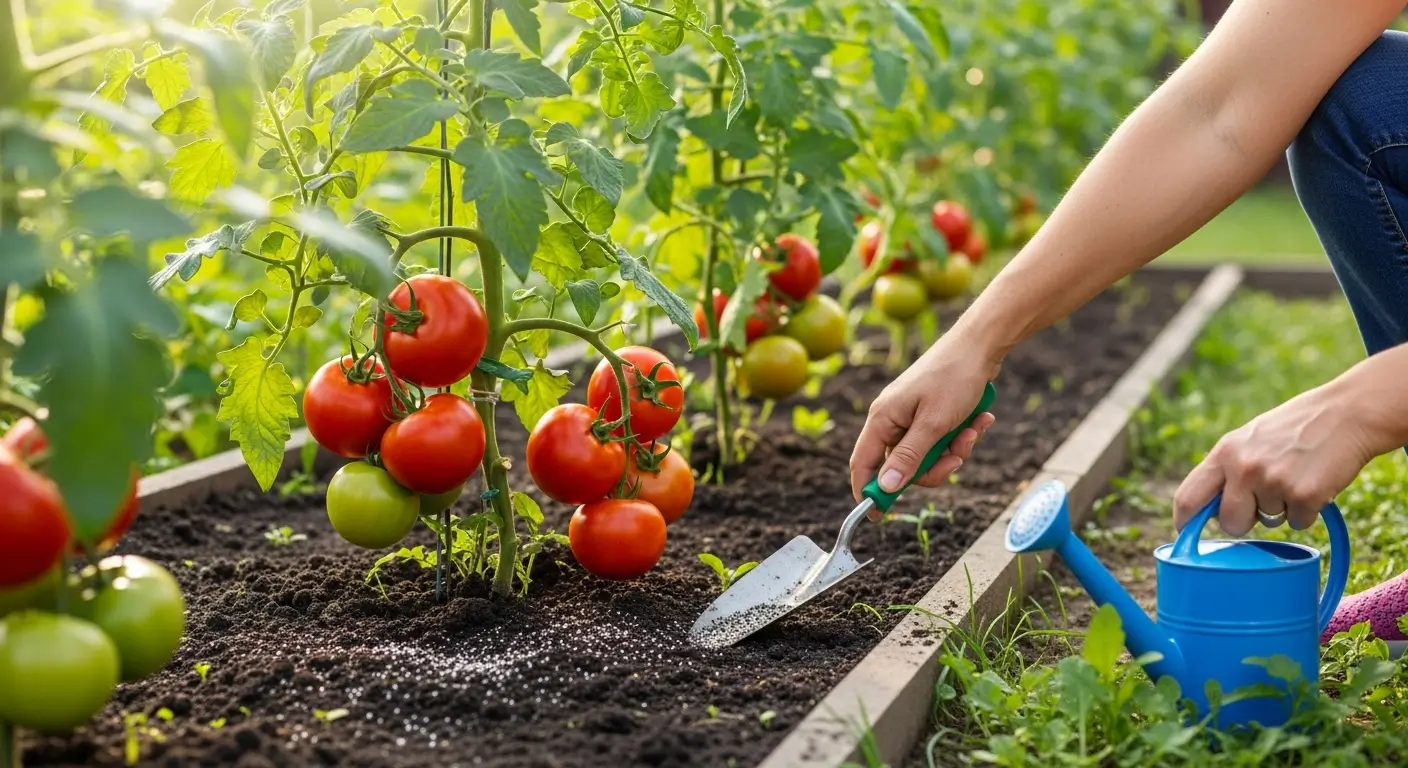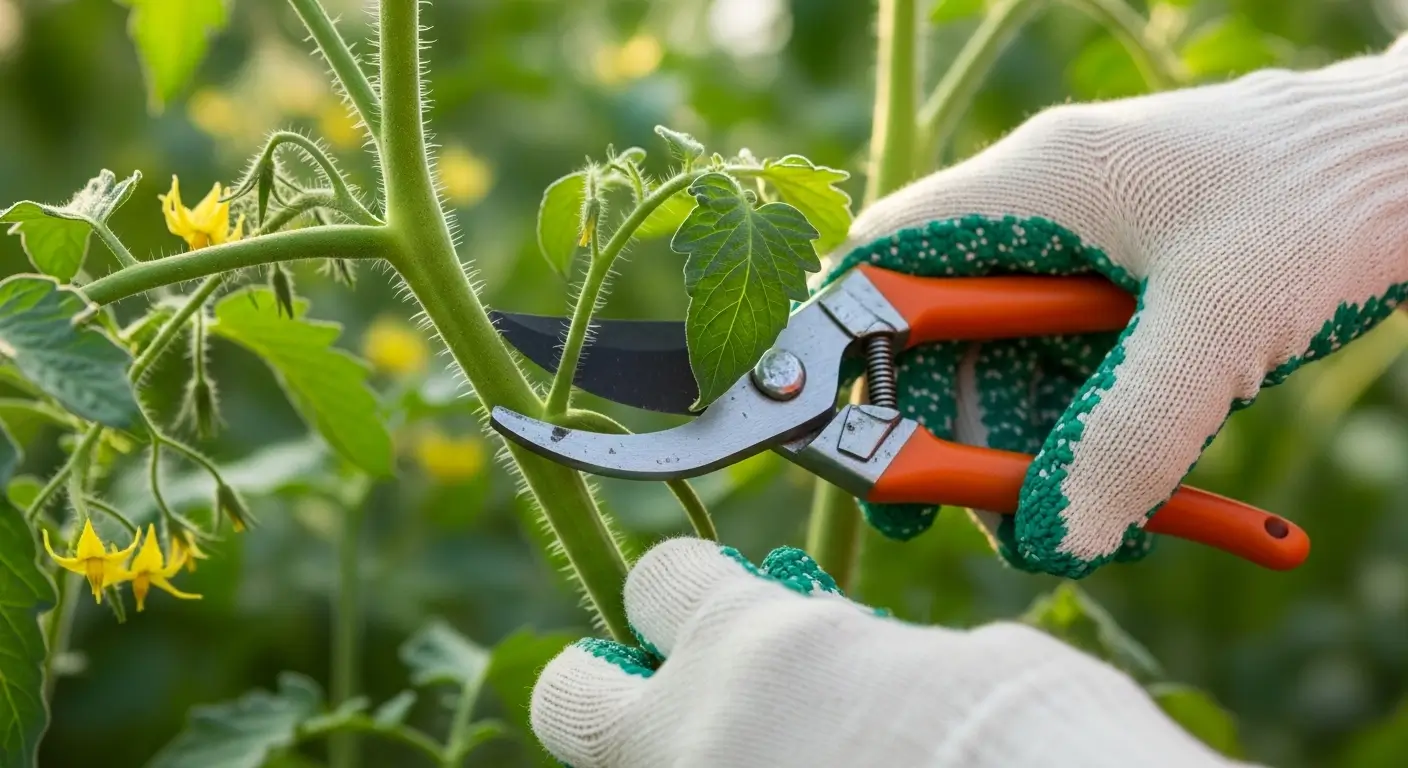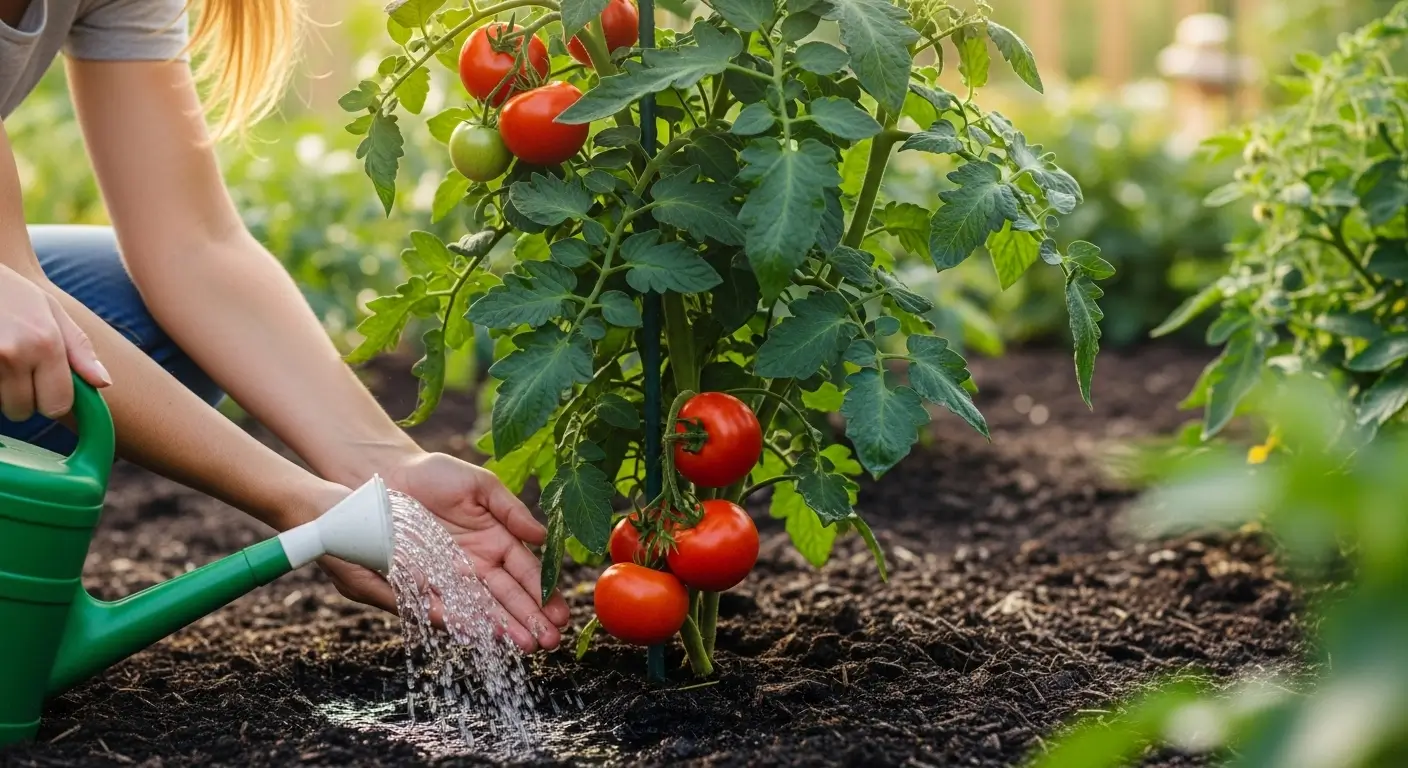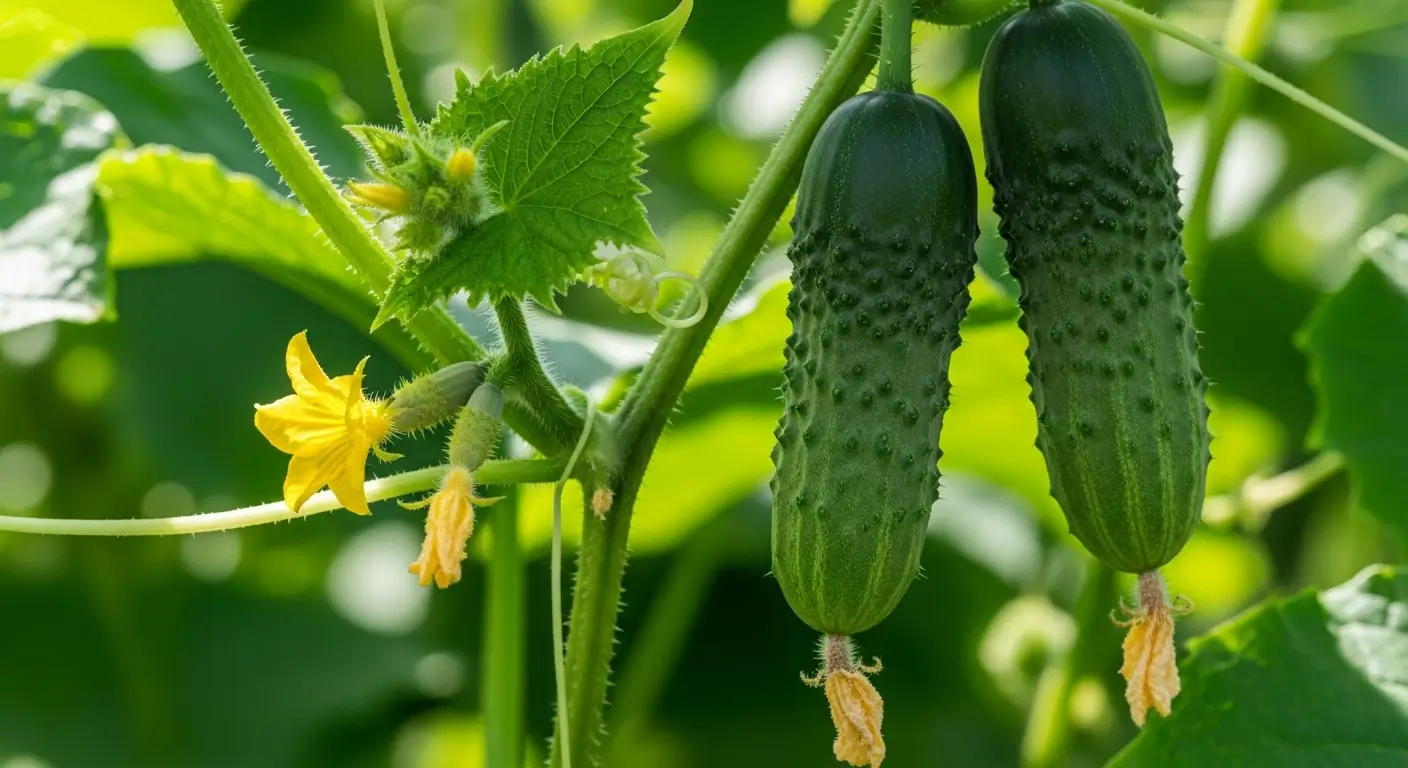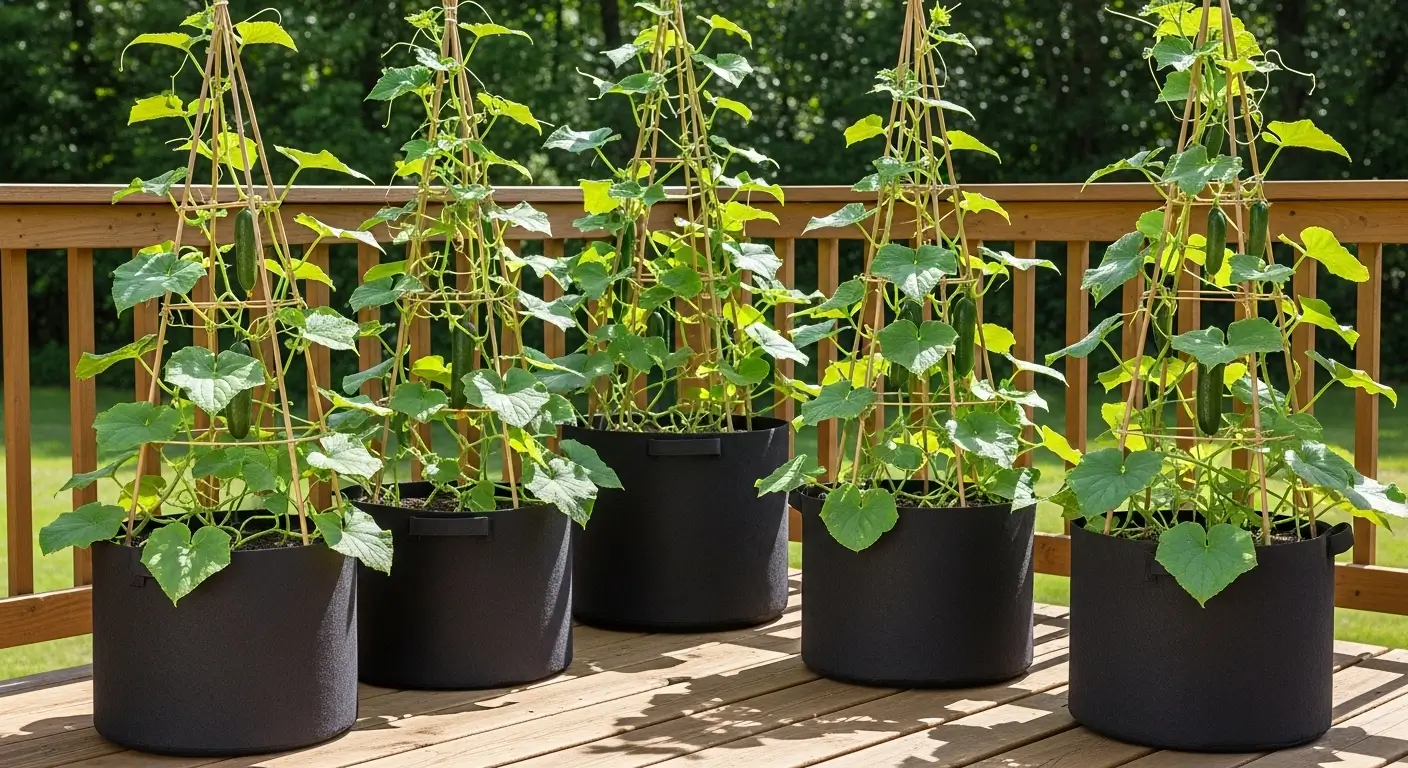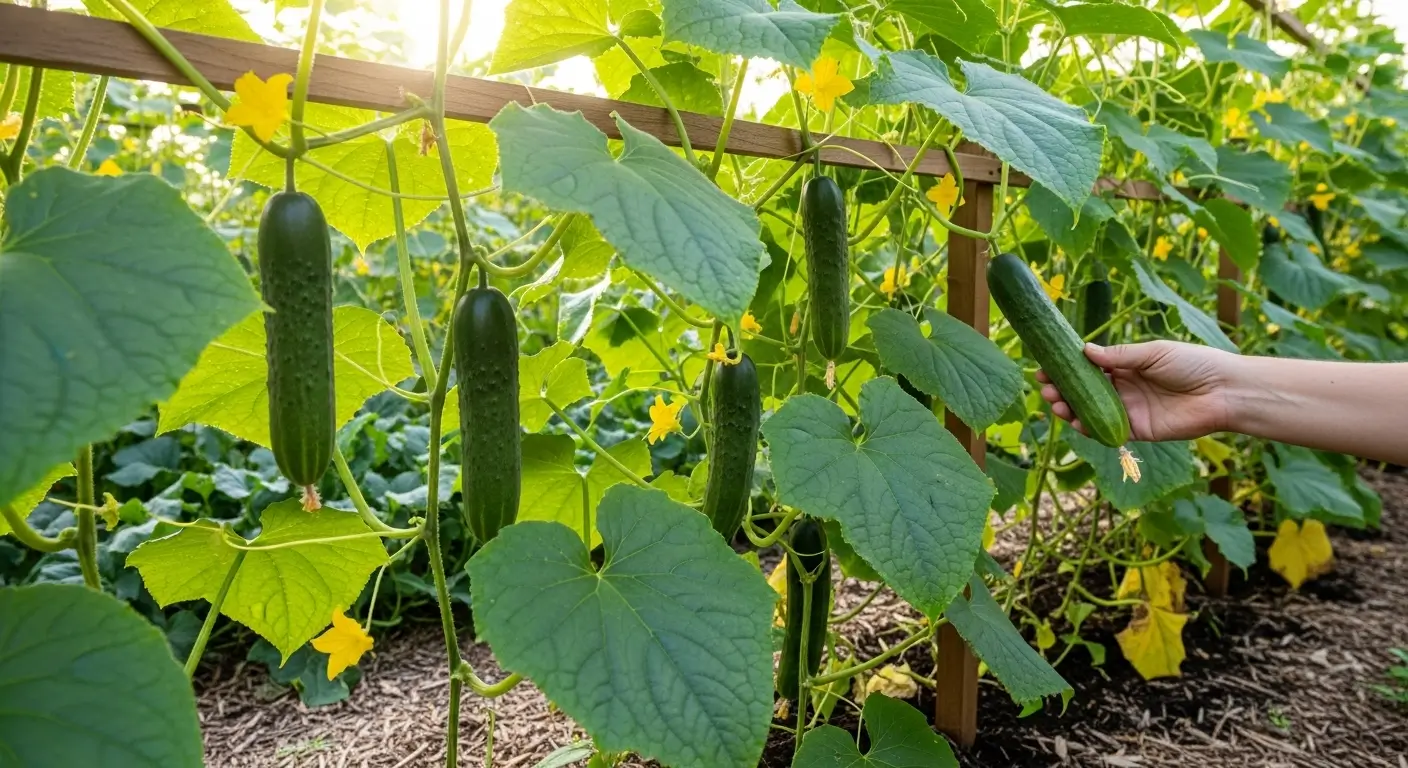Can we talk about that moment when you bite into a perfect homegrown tomato? It’s basically life-changing stuff. I still remember my first decent tomato harvest – I literally stood in my garden eating cherry tomatoes like candy, juice dripping everywhere, probably looking like a total weirdo to my neighbors. But honestly? Zero regrets.
Here’s the thing, though – figuring out when to pick tomatoes nearly drove me nuts my first few years. I’d either grab them too early (hello, cardboard flavor) or wait too long and find the raccoons had thrown themselves a tomato party in my garden. Talk about frustrating!
After 15 years of trial and error (okay, mostly error at first), I’ve finally cracked the code on harvesting tomatoes. And trust me, once you get the timing right, you’ll wonder how you ever lived without perfect homegrown tomatoes.
So whether you’re staring at your first tomato plant wondering what you’re doing, or you’ve been growing them forever but want to nail the timing, I’ve got you covered.
Table of Contents
Understanding Tomato Ripeness Stages
Alright, so tomatoes don’t magically turn red overnight – wouldn’t that be nice? They go through these pretty obvious stages, and once you know what to look for, you’ll feel like a tomato whisperer. Seriously.
The Green Stage
Your babies start out as these little hard green balls. They’re cute, but I haven’t even considered picking them. I know – the anticipation is killing you, but patience, my friend.
Breaker Stage
This is when things get exciting! You’ll see the first tiny hint of color change – maybe the green lightens up a bit, or you’ll spot a slight blush at the bottom. I literally do a happy dance when I see this because it means we’re getting somewhere.
Turning and Pink Stages
Now we’re cooking! The turning stage is when maybe 10-30% of your tomato shows color, and the pink stage is 30-60%. Here’s a game-changer I learned from my sweet neighbor, Mrs. Peterson – you can totally pick them at the pink stage and they’ll keep ripening indoors. Mind blown, right?
Light Red to Fully Ripe
Light red means you’re at 60-90% colored, and fully ripe is… well, fully colored and gives just a little when you squeeze it gently. This is tomato nirvana, people.
Penn State Extension provides detailed scientific backing on these tomato ripening stages and confirms that tomatoes are physiologically ripe at the breaker stage, even though they haven’t reached full color yet.
The cool thing is, knowing these stages gives you options. You don’t have to sit there praying the weather holds out for that perfect red color.
When to Pick Tomatoes: Timing is Everything
Okay, here’s where I’m gonna share some stuff I wish someone had told me years ago. When to pick tomatoes isn’t just about waiting for them to look pretty – some strategy is involved.
The Color Test
Most folks just wait for that gorgeous deep red; color matters. But here’s my little secret: I pick tons of my tomatoes at the pink stage, especially later in the season. They taste just as good, and I don’t risk losing them to weather or critters.
The Feel Factor
Gently cup that tomato and give it the tiniest squeeze. It should provide just a little bit, like a ripe peach. Rock hard? Wait a few days. Mushy? Oops, you waited too long (been there, trust me).
The Stem Test
A ripe tomato should come off easily with a gentle twist and pull. If you’re wrestling with it, it’s probably not ready yet.
Weather Considerations
Oh man, this is where experience really saves your butt. When it’s gonna be consistently under 55°F at night, I go into panic mode and start harvesting everything that’s hit the breaker stage. They’ll ripen beautifully inside, and you won’t lose them to frost.
Same deal with crazy hot weather – anything over 90°F for days and I’m out there picking at the pink stage. Hot weather makes tomatoes taste blah, and sometimes they just stop ripening altogether. Last summer, during that insane heat wave we had, I picked everything early and let them finish up in my cool basement. Worked like a charm!
Time of Day Matters
Here’s something nobody tells you – I always harvest in the morning when everything’s cool and firm. You can do evenings too, but avoid midday when they’re all sun-warmed and squishy. Nobody wants bruised tomatoes.
Harvesting Tomatoes: Techniques That Actually Work
Let me tell you about my tried-and-true harvesting method – because yeah, there’s a right and wrong way to do this.
The Right Tools
I keep sharp pruning shears in my harvest basket because sometimes that stem won’t budge. Clean cuts are better for the plant anyway. And I use a shallow basket with an old towel in it – none of those deep buckets where tomatoes beat each other up.
The Proper Technique
Support the tomato with one hand and gently twist and pull up with the other. If it doesn’t want to come, grab those shears and snip the stem about half an inch from the fruit. Don’t be a hero and yank on it – you’ll mess up both the tomato and the plant.
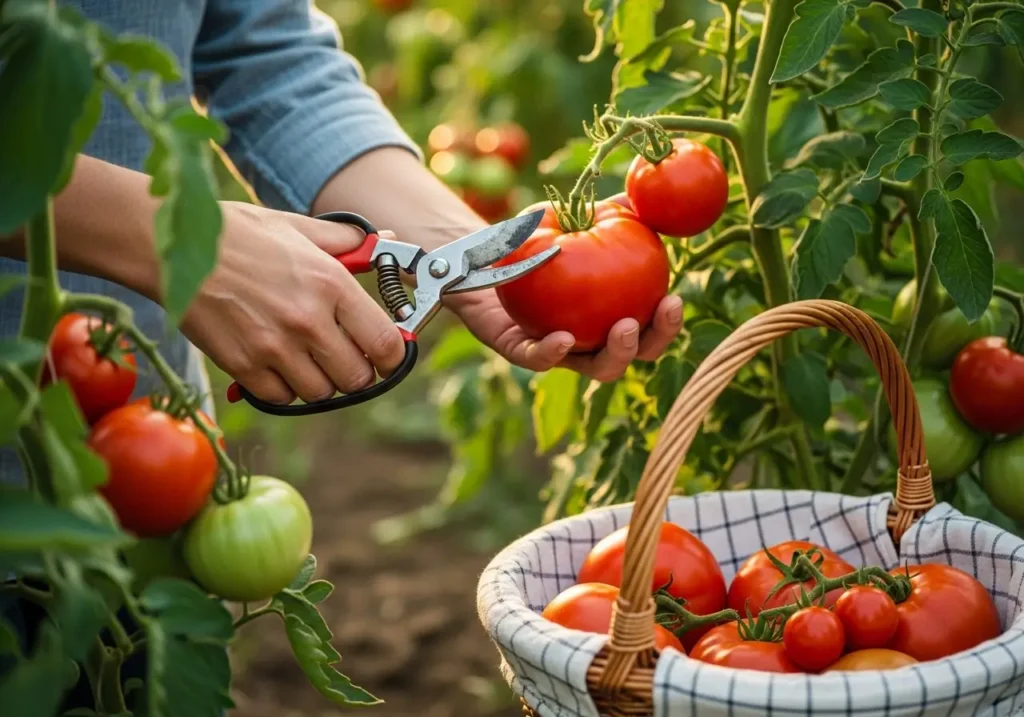
Handling Different Varieties
Cherry tomatoes are super forgiving – they practically jump into your hand when they’re ready. But those big beefsteak guys? They need the VIP treatment. I handle them like they’re made of glass and never stack them more than two deep.
Post-Harvest Tomato Storage Tips
This is where many people mess up, and honestly, I did too for too long. Good storage can mean enjoying tomatoes for weeks versus watching them turn to mush in a few days.
Counter Ripening
For anything I’ve picked at the breaker or pink stage, I just line them up on my kitchen counter, stem-side up. Room temp is perfect – around 65-70°F. They’ll keep ripening and taste better than if I’d left them on the vine sometimes.
The Paper Bag Trick
Want them to ripen faster? Toss them in a paper bag with a ripe apple or banana. The gas they put off speeds things up. Just check on them daily because this trick works almost too well!
Refrigeration Reality
Okay, real talk about putting tomatoes in the fridge – only do it once they’re completely ripe, and only if you can’t eat them in a day or two. Cold temperatures stop the ripening process and make them taste like cardboard. I learned this the hard way with a whole batch of beautiful pink tomatoes that turned into flavorless disappointments.
Long-Term Storage
For the long haul, I wrap individual green tomatoes in newspaper and stick them in my cool basement. Check weekly and pull out any that are ripening or going bad. Done, right? You can have fresh tomatoes in November. They are pretty sweet.
Troubleshooting Common Harvesting Problems
Let me hit you with some solutions to the stuff that had me pulling my hair out in the early days.
Cracking and Splitting
Those beautiful, fat tomatoes that suddenly crack overnight? Usually happens when they get inconsistent water, drought, followed by a downpour. The inside grows faster than the skin can handle. I just harvest these right away and use them immediately, cutting out the damaged bits.
Blossom End Rot
Those nasty dark spots on the bottom aren’t a disease – it’s blossom end rot, usually from wonky watering and calcium issues. Sadly, these guys are trash, but you can prevent it with consistent watering and decent soil.
Green Shoulders
Sometimes the top stays green even when everything else ripens. It’s usually just how that variety rolls, though crazy heat makes it worse. Still totally edible – just cut off the green parts.
Pest Pressure
Ugh, the critters. Squirrels and birds have impeccable timing – they always know exactly when your tomatoes are perfect. My solution? Beat them to it by harvesting at the pink stage and finishing the ripening inside.
Making the Most of Your Harvest
Here’s how to squeeze every bit of awesome out of your tomato plants.
Encouraging Continued Production
Here’s a cool thing – the more you pick, the more they produce! I check my plants every 2-3 days during peak season, grabbing anything that’s hit the pink stage or beyond.
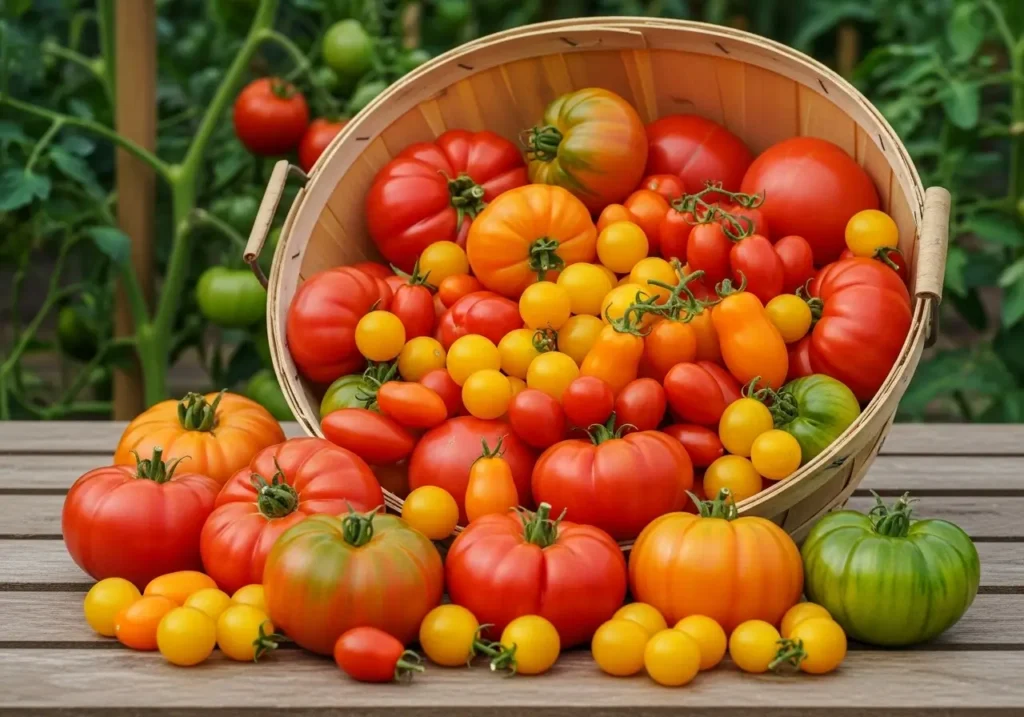
End-of-Season Strategy
When fall’s coming and you’re racing the first frost, don’t forget about those green tomatoes! I harvest all the decent-sized green ones and ripen them inside. The tiny ones make killer pickles or fried green tomatoes.
Seed Saving Considerations
If you want to save seeds, let a few tomatoes get super ripe on the vine – almost overripe. The seeds need that extra time to mature properly for next year.
Connecting the Dots: Your Complete Tomato Journey
Growing awesome tomatoes starts way before harvest time. If you’re new to this whole tomato thing or want to brush up on the basics, definitely check out our complete guide to growing tomatoes – it covers everything from dirt prep to picking varieties.
And suppose you’re impatient like me and want tomatoes ASAP. In that case, you’ll love learning about the fastest-growing tomato varieties that can give you ripe fruit in just 55 days. It’s also super helpful to know how long tomatoes actually take to grow, so you can plan your whole timeline.
Your Tomato Harvesting Success Story Starts Now
Look, I’m gonna be honest with you – getting your tomato harvesting timing perfect takes some practice. My first few seasons were… let’s call them learning experiences. But each year got better as I figured out what my plants told me.
Here’s what I want you to remember: don’t be scared to harvest at the pink stage, especially late season or when the weather’s being weird. Pay attention to how they feel, not just how they look. Store them right so you can enjoy them for weeks. And most importantly – taste your success! There’s seriously nothing like a homegrown tomato you’ve harvested at the perfect moment.
Every garden’s different, and every season throws you curveballs. What matters is that you’re out there trying, learning as you go. Those tomatoes you’re babying right now will reward you with flavors you can’t buy anywhere.
What’s your biggest tomato harvesting challenge this season? Drop a comment and tell me about your wins and fails – I love hearing from fellow gardeners, and we’re all figuring this out together.
Happy harvesting, and here’s to the most amazing tomatoes you’ve ever grown!
Frequently Asked Questions About Harvesting Tomatoes
When is the best time to harvest tomatoes?
The best time to harvest tomatoes is at the breaker stage when you first see color change at the blossom end, or wait until the pink stage (30-60% colored) for fuller flavor. You don’t need to wait for full red color – tomatoes harvested at breaker or pink stage will ripen beautifully indoors and often taste better than store-bought.
How do I know if a tomato is ripe enough to pick?
Test ripeness using three methods: look for color change from green to pink/red, gently squeeze to check if it yields slightly like a ripe peach, and see if it releases easily from the vine with a gentle twist. If the tomato is rock hard or requires yanking to remove, wait a few more days.
Can I harvest green tomatoes and will they ripen?
Yes, you can harvest green tomatoes that have reached the breaker stage (showing first hint of color change) and they will ripen indoors at room temperature. This is especially useful before frost, storms, or extreme heat. Place them stem-side up on your counter or in a paper bag with a ripe banana to speed ripening.
How should I store tomatoes after harvesting?
Store harvested tomatoes at room temperature (65-70°F) stem-side up on a counter or lined basket. Never refrigerate unless fully ripe and you can’t use them within 1-2 days. For longer storage, wrap green tomatoes individually in newspaper and store in a cool, dark place where they can ripen gradually over weeks.
